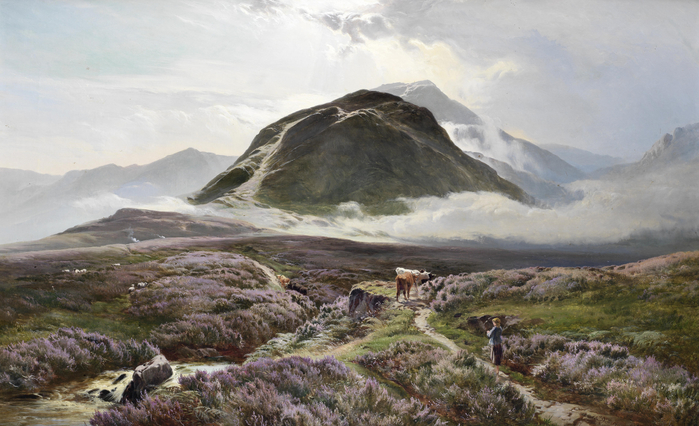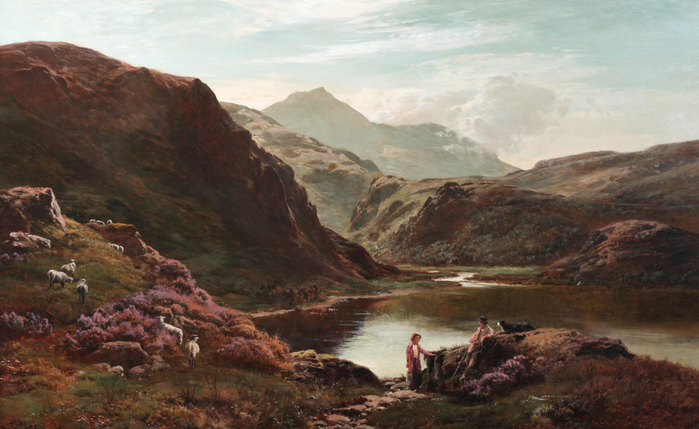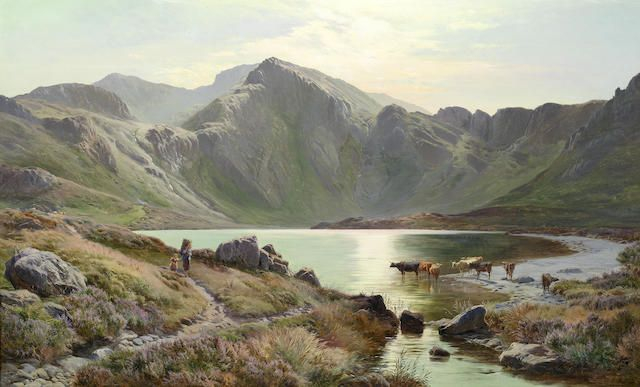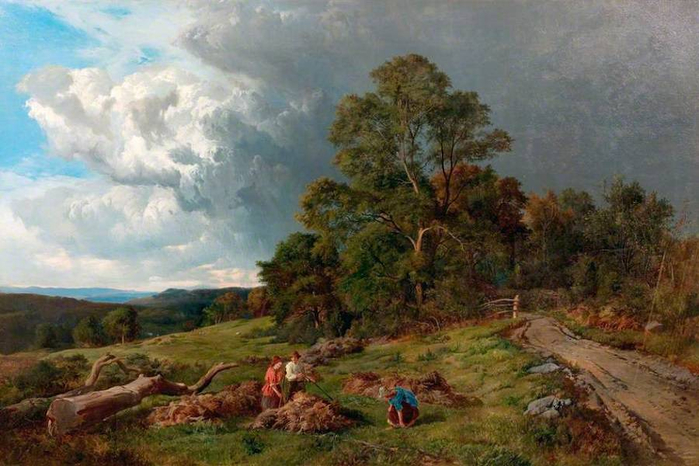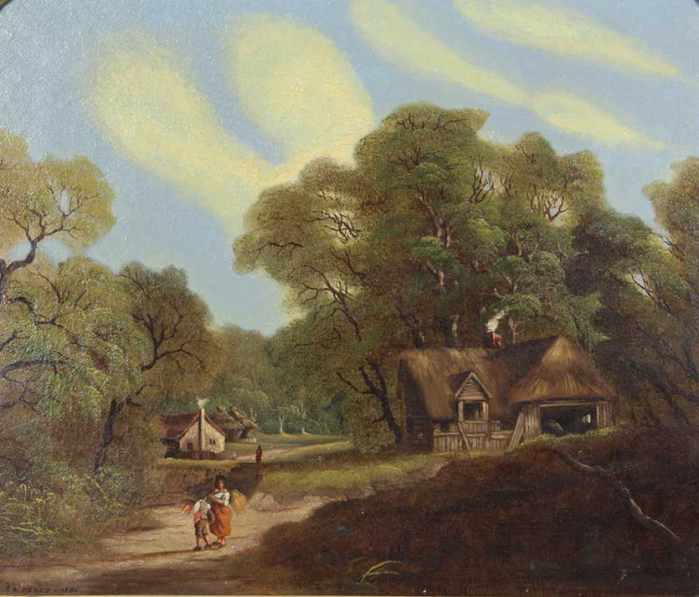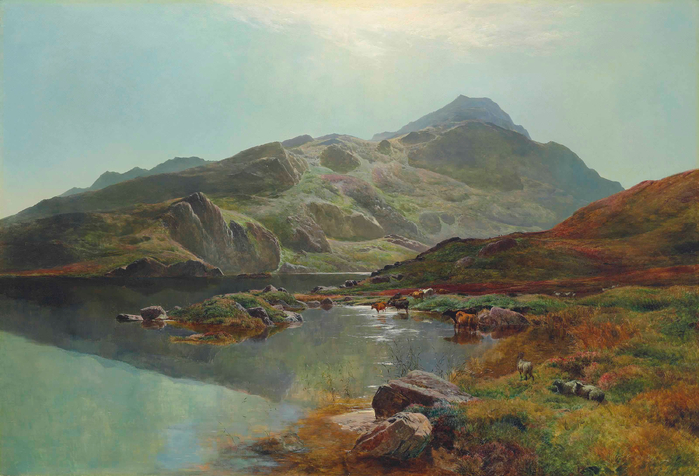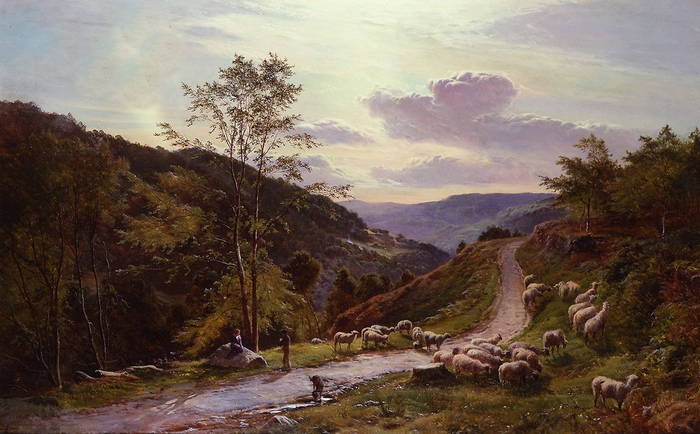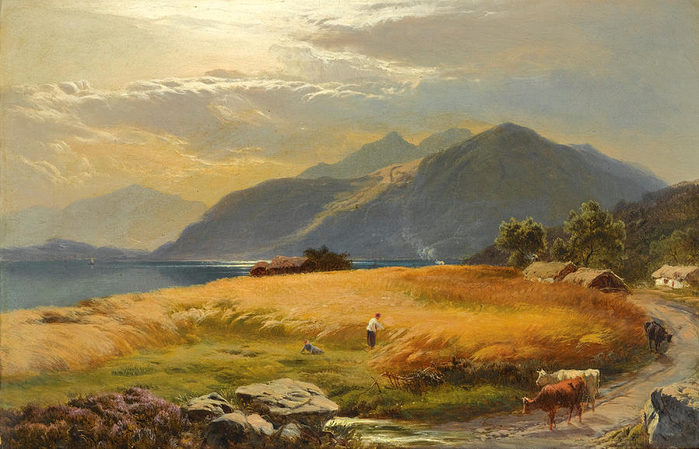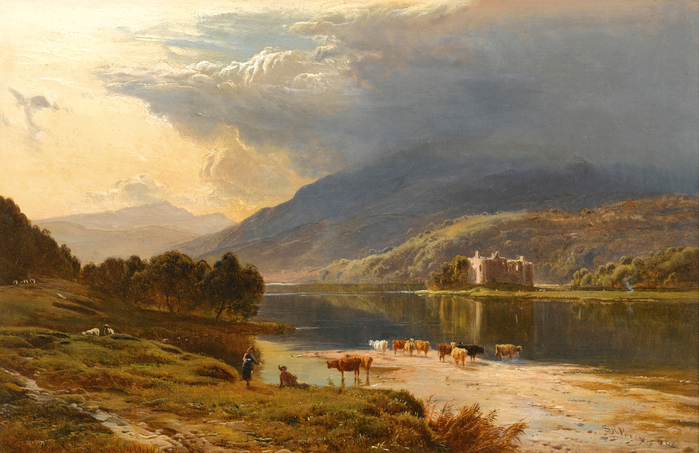

Sidney Richard Percy (22 March 1822 – 13 April 1886) was an English landscape painter during the Victorian era, and a member of the Williams family of painters.
Sidney Richard Percy had his greatest success painting landscapes of grazing cattle, typically set against backgrounds of distant mountains and cloudy skies. The prevailing hues of his landscapes are earth tones and soft greens, accentuated by a variety of pastel hues. The detail in his work is part of its appeal, and "it was remarked that his rocks and stones were sufficiently accurate to have served as illustrations to the writings of Sir Roderick Murchison, the popular 19th-century geologist."Llyn-y-Ddinas, North Wales, one of his more popular works on the internet, displays these qualities. He also painted landscapes of farm fields, wheel-rutted country roads, and the occasional boat scene on a lake.
His art interests were not limited to painting, and he was also an amateur photographer, in a day when photography was new and exciting, yet still a poorly understood medium. He frequently used his own photographs of gypsies in the Barnes or Wimbledon Common as the basis for similar figures in his paintings, even though some contemporary critics complained how these figures ruined what otherwise would be delightful landscapes. A classic example is Storm Gathering on Cader Idris, North Wales, which he exhibited in 1856 at the Royal Academy, and which has the same gypsy girls in it as one of seven of his photographs in the Victoria and Albert Museum. In fact, this painting is one of the ones singled out for some of the aforementioned criticism. These same girls appear in his 1861 work A Rest on the Roadside, and they appear again, but reversed, in his 1873 version of Llyn-y-Ddinas, North Wales, showing that he repeated themes when convenient.
Although he generally painted in oils, a number of small watercolors on cardboard exist, typically unsigned, that are his work. The family, and his son the painter Herbert Sidney Percy in particular, referred to these as "potboilers", meaning that they were quickly, and often crudely executed, yet easily and cheaply sold "to put food on the table" when working on larger, more time-consuming oils for exhibition, or commissions. Many of these watercolor "potboilers" were done in the field, and then brought back to the studio to refer to when executing a more formal oil on canvas.
Sidney Richard Percy was extremely popular during the early part of his career, which for a short time brought him a fair amount of income. Among his patrons during this time was Prince Albert the Royal consort who in 1854 gave Percy's landscape of A view of Llyn Dulyn, North Wales, which had just been exhibited at the Royal Academy, as a gift to his wife Queen Victoria. This painting still hangs today in the Royal Collection. Unfortunately Sidney Richard Percy outlived his popularity, and the art world was more excited about impressionism and other styles than landscapes when he died. Today though, his work is much sought after, and his better paintings bring much higher prices in auction than any of those of his brethren in the Williams family.
When the Athenaeum in 1886 (i. 592) ran an obituary for Sidney Richard Percy they called him, "the well-known and popular painter, founder of the so-called School of Barnes . . ."Although depending on the context of what is meant by the so-called Barnes School, this is a bit of an injustice to his father Edward Williams, whom it might be argued is the founder of the Barnes School of painters, but it illustrates the popularity that Sidney Richard Percy held with the art-buying public of his day.
